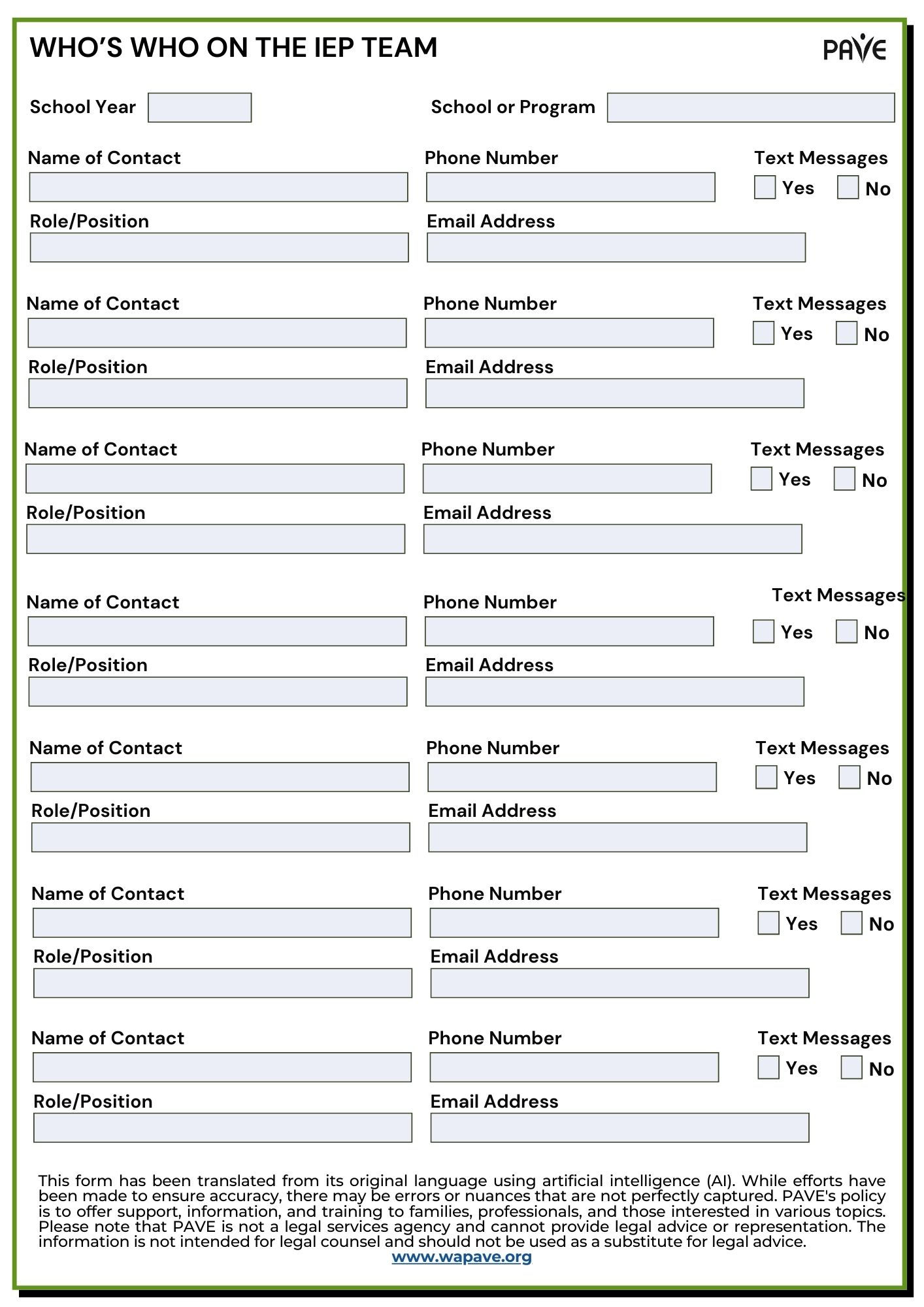PAVE offers a collection of downloadable sample letters, available in multiple languages, to help families advocate for their children’s educational needs. These letters support clear and effective communication between families and schools, making it easier to request evaluations, meetings, or behavioral support. Whether you’re just getting started or need help with a specific concern, these tools can guide your next steps.
What is an Advocate?
An advocate is someone who works toward a cause or goal. While professional advocates may be trained to support others, family caregivers often become advocates themselves when they speak up for a child’s needs. Sometimes the hardest part of advocacy is figuring out what to do next. When a child has unmet needs at school, students and family advocates can request evaluations, meetings, or behavioral assessments to help improve services. Putting these requests in writing helps formalize the process and ensures that everyone involved is accountable.
PAVE helps families get started with a collection of sample letters, available for download in multiple languages. We’ve bundled links to those letter templates here for easy reference. Each link takes you to a short article with key information to help you understand the process of special education and how your customized letter can move you forward in that process.
Always Keep Your “Why” in Mind
Why are you taking action? Because you want something to improve for your child! PAVE’s short video, Quick Start Your Advocacy in Two Steps, might help you get ready to craft a letter. The video helps you ask two key questions:
- What do you want?
- Who has the power to work with you and make that happen?
As you write your letter, keep those questions and your “why” top of mind.
Request an Evaluation
Sample Letter to Request Evaluation: Schools are required to evaluate students to determine eligibility for a Section 504 Plan or an Individualized Education Plan (IEP). A referral can come from anyone with knowledge of the student and must be in writing. This article provides a sample letter and a link to an alternative form provided by the Office of Superintendent of Public Instruction (OSPI).
Download the Sample Letter to Request an Evaluation in:
English | Chinese (Simplified) 中文 (Zhōngwén) | Korean 한국어 (Hangugeo) | Russian Русский (Russkiy) | Somali Soomaali | Spanish Español | Tagalog | Ukrainian українська | Vietnamese Tiếng Việt
Request an IEP Meeting
Sample Letter to Request an IEP Meeting: Family members can request an IEP team meeting anytime there are concerns about how the IEP is being implemented and whether a student may have unmet needs. This article includes information about who is required to attend an IEP meeting and the rights of parents to participate in educational decision making.
Download the Sample Letter to Request an IEP Meeting in:
English | Chinese (Simplified) 中文 (Zhōngwén) | Korean 한국어 (Hangugeo) | Russian Русский (Russkiy) | Somali Soomaali | Spanish Español | Tagalog | Vietnamese Tiếng Việt
Request a Functional Behavioral Assessment
Sample Letter to Request a Functional Behavioral Assessment: If a child’s behavior is getting in the way of their education, the school is responsible to assess the problematic behaviors and develop a support plan to teach the student what to do instead. In addition to a sample letter, this article provides a link to a video to help families and schools work together through this process.
Download the Sample Letter to Request a Functional Behavioral Evaluation in:
English | Chinese (Simplified) 中文 (Zhōngwén) | Korean 한국어 (Hangugeo) | Russian Русский (Russkiy) | Somali Soomaali | Spanish Español | Tagalog | Ukrainian українська | Vietnamese Tiếng Việt
Request an Independent Educational Evaluation (IEE)
Evaluations Part 2: Next Steps if the School Says ‘No’: If the school evaluates a student and says they aren’t eligible for an IEP or a specific area of service, parents have steps they can take if they disagree. One option is to request an Independent Educational Evaluation (IEE) from an outside provider. This article provides a sample letter for requesting an IEE at school district expense. If the family requests an IEE because they disagree with the school’s evaluation or its conclusions, then the district must pay for the IEE or deny the request through Due Process: IEE denials are evaluated by an Administrative Law Judge.
Download the Sample Letter to Request an Independent Educational Evaluation (IEE) in:
English | Chinese (Simplified) 中文 (Zhōngwén) | Korean 한국어 (Hangugeo) | Russian Русский (Russkiy) | Somali Soomaali | Spanish Español | Tagalog | Ukrainian українська | Vietnamese Tiếng Việt
Final Thoughts
Families who want individualized assistance can reach out to PAVE by completing the Get Support form. Check out the PAVE Calendar for upcoming trainings and events.


